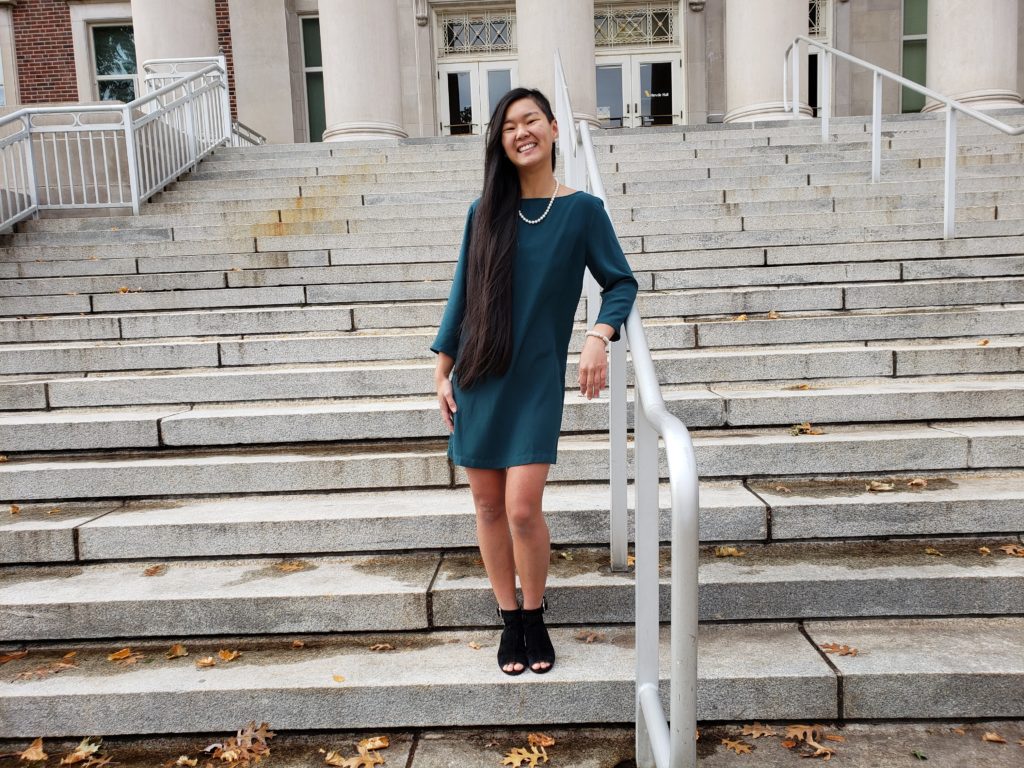How to Build Up Your Professional Wardrobe

Sometimes the question ‘What should I wear?’ weighs more heavily than others. For situations that surround your career, clothing is an important part in portraying yourself. With so many options of what to wear, how do you even start building a wardrobe that can help you during your career?
Start with the basics.
A two-piece pant or skirt-suit is the most essential basic for all genders; men should also have a nice tie or bowtie on hand as well. The classic jacket and pants combo provides a set that can be tailored for almost every business occasion; if the situation is more casual, the jacket doesn’t have to be worn. To pair with the suit, a few solid color blouses or button-downs should be added to provide more options. A pair of khakis or trousers can be added to provide even more versatility. A nice pair of stylish and comfortable dress shoes should be added to the mix.
What makes these basic pieces essential is their ability to be worn in almost every occasion. It is important to buy basic pieces with great quality, fit, and color. The basics should be thought of as an investment; and remember, quality ensures that the pieces will last a long time and can be relied on. The fit should be appropriate; too tight and it can look unprofessional, but too big could look sloppy. Colors should be neutral. Blacks, navy blues, and greys are always good to have around because they can be paired with almost anything.
If you are attending a career fair, make sure to have a leather or professional looking portfolio to hold resumes in.
Stylize and personalize.
Once the basic pieces are down, your “foundational wardrobe” can be customized to express yourself. There are many ways to personalize your wardrobe to allow people to see your true colors.
One way to personalize is to add more clothing pieces. A colored blazer or a patterned tie can add a bit more pizzazz to your basic wardrobe. Even though it can be fun to add unique pieces, always remember that there must be a balance between personality and professionalism. That means always look out for fit, color, and length to ensure it is appropriate for the work place.
Adding more clothing pieces can get expensive. One affordable way to stylize your wardrobe is to add accessories.
Accessories that can be added include:
- Watches. A nice watch provides a daily accessory that can go with any outfit. Plus, you don’t need to always pull your phone out to check the time.
- Jewelry or cufflinks. Costume jewelry can elevate a bland outfit; however, it is important to make sure your accessories are workplace appropriate. In more conservative industries, costume jewelry should be used rarely if at all. A nice pair of earrings is sometimes just enough to style a simple outfit. It is advised that men should buy a pair of cufflinks to make them appear more professional.
- Bags. For women, a simple all-year tote that can carry documents and endure all conditions is important. For men, leather satchels or briefcases are classic, durable, and stylish pieces. Sometimes, nice bags can cost a bit more, but they should be thought of as an investment. Nicely, attractive bags and accessories can often be found in thrift stores at a fraction of their original prices.

Know the dress code.
Every industry has their own silent culture and dress code. For example, a bank has a different company culture than a tech startup. Let your company culture be your guide in knowing what to wear. If you are not sure what is appropriate to wear, look around at your coworkers or just ask. Knowing your audience will help you blend in clothing-wise.
If you are new to a job and don’t know what type of dress they prefer or do not know the industry that well, try to think of them as falling into one of two dressing categories.
- Business Professional. Business professional is all around more traditional and conservative. A two-piece pant or skirt suit in a dark and simple pattern is usually worn. Formal and classic shoes are the norm. Some examples of a business professional environment are financial firms and law firms.
- Business Casual. The main difference between business professional and business casual is the need to wear a two-piece suit. The jacket or blazer can be omitted or traded for a cardigan. Khakis can also be worn more often. While you want to avoid sneakers and casual sandals, footwear doesn’t need to be formal.
Can you be over or underdressed?
Yes. Not knowing your industry dress culture when interviewing may hurt your chances of getting in. What overdressing, or underdressing, shows is that you are not savvy about the industry you are trying to enter. Before the interview or career fair, try to do research on at least whether the industry is more business professional or casual and go from there.
Be a smart shopper.
Buying quality wardrobe pieces is important, but you needn’t break the bank to do so. There are many options to avoid paying full price.
- Thrift stores. Not only can it be fun looking at all the unique items, but buying used clothes is also more environmentally conscious. Slightly-used, higher quality brands can often be found at a significant discount.
- Look at clearance racks or sales. Don’t be afraid to sift through discount racks or even wait for a sale. A lot of stores put on sales to get rid of their end of season items or to do promotional sales during holidays, so keep an eye out during those times especially.
- Don’t waste money on trendy pieces. Trends come and go in a heartbeat, so buying items that are only going to look good for one season is not always worth it. A good rule of thumb is to ask yourself how often you will use the piece. If you will only use the piece sparingly, it’s probably not worth the investment.
- Avoid duplicates. It is always tempting to shop sales, but keep in mind what you already own while doing so. Buying duplicates can end up as a waste of money and time.
Clothing is an important part of portraying who we are during our careers, but it is not the most important aspect. Show your personality and enthusiasm when interviewing or speaking to a potential employer. When I interviewed for a position, the interviewer, also the company owner, immediately noticed my smile and energy and even said so. By showing how excited and interested I was in the position, I gained a second and final interview.
Have the basics, be conscious of your wardrobe add-ons, and know your workplace culture. Dress your best because appearances do matter. By being comfortable and confident in your attire, you will free yourself up to show off your best attribute: YOU!
About the author: Cooke Scholar Emily Zaretzky is a 2017 recipient of the Cooke College Scholarship Program studying user experience design at Purdue University. Emily has two years of experience conducting independent scientific research. She is also skilled in graphic design and enjoys taking on side projects to utilize and build upon her skill set.